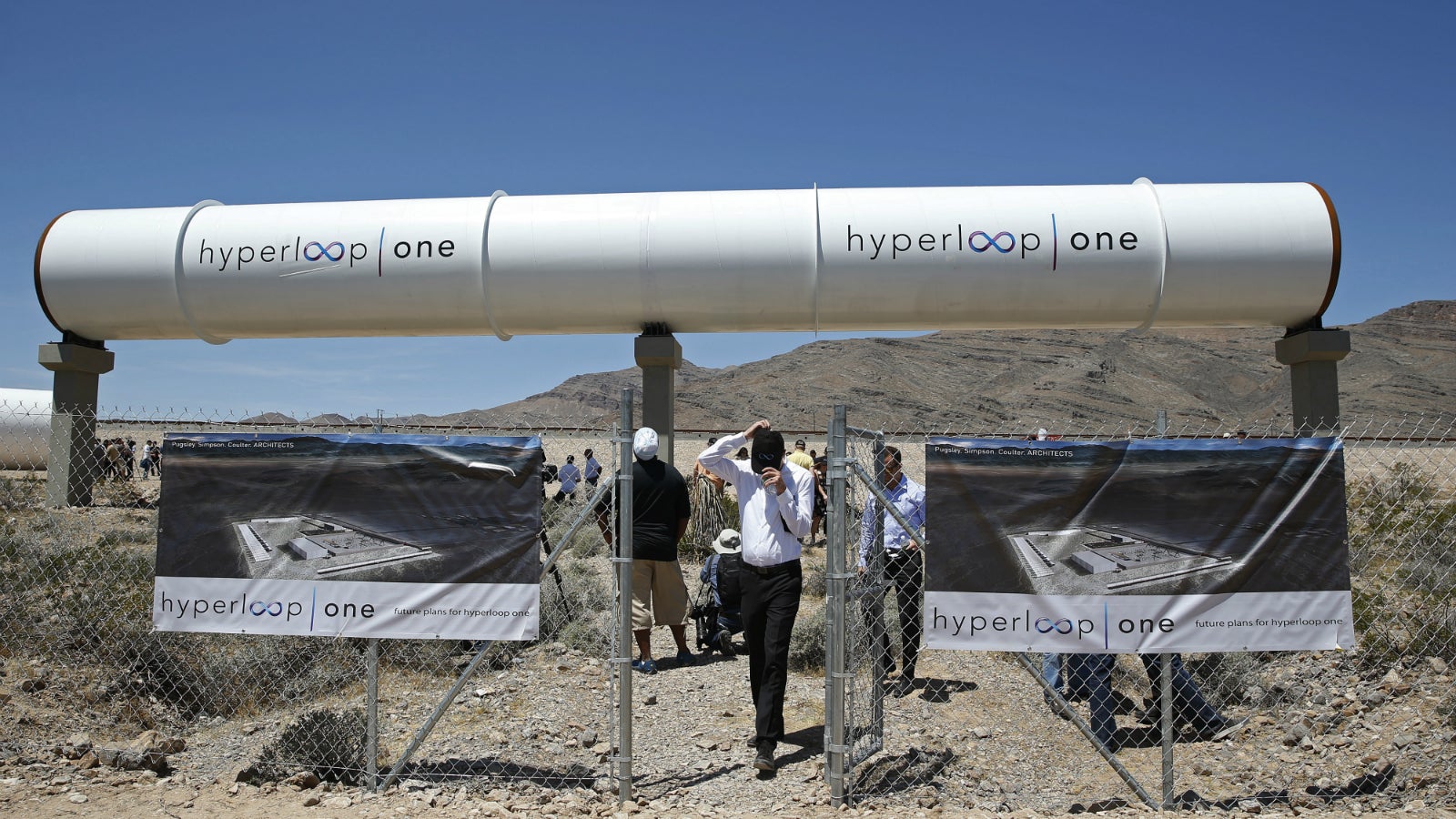With Hyperloop, India eyes an unrealistic future
While India’s existing transportation infrastructure falls woefully short in the face of rapid urbanisation, the country is looking at futuristic—maybe even unrealistic—options to fix the yawning gap.


While India’s existing transportation infrastructure falls woefully short in the face of rapid urbanisation, the country is looking at futuristic—maybe even unrealistic—options to fix the yawning gap.
On Feb. 28, Hyperloop One, one of the two companies vying to build the world’s first Hyperloop by 2020, announced its intent to begin operations in India by 2021.
Currently at a conceptual stage, this futuristic mode of transport would use pods cruising through near-vacuum tubes at speeds faster than a passenger aircraft. Hyperloop One is now seeking Indians’ views on preferred routes.
Hyperloop One’s plan comes barely three months after California-based Hyperloop Transportation Technologies (HTT), the other company in the fray globally, submitted a proposal to the Narendra Modi government to link the financial hub of Mumbai with the western Indian city of Pune. The government is considering the proposal.
If their plans are approved, these two companies could leapfrog transportation technology in Asia’s third-largest economy. For one, India’s existing infrastructure and facilities are creaky at best, overwhelmed by rapid urbanisation.
“Hyperloop One will help accelerate India’s growth towards building substantial infrastructure that is financially and environmentally sustainable,” Rob Lloyd, CEO of Hyperloop One, said in New Delhi on Feb. 28. “We are already working with the governments around the world on passenger and freight projects, and we look forward to also partnering with India to support this endeavour.”
Why India?
India has a transportation crisis on its hand.
Its 164-year-old railways are still remarkably slow—with an average train speed of 54km/hour—and are in desperate need of modernisation. The roadways aren’t exceptional either. One person is killed in India every four minutes in road accidents. The country’s airports, too—particularly in the metros—are struggling with congestion and capacity shortage.
“I think India is a perfect country to implement this project because the roads are not that good here. The transportation is not capable to sustain a growth in a country like India,” Bibop Gresta, co-founder of HTT, told Indian media on Dec. 06.
Besides, it’s not just the infrastructure gap that Hyperloops could bridge. “There is a very big argument that the employment of so many people to build the line itself would be a tremendous economic boost, like in the US they built the freeway system in the 1950s,” Craig Hodgetts, a professor at UCLA and the principal and co-founder of interdisciplinary architecture and design studio Hodgetts + Fung, said.
Hodgetts also reckons that the Hyperloop would play a crucial role in connecting India’s vast hinterlands.
However, the 2021 plan seems unrealistic. After all, Hyperloops are still in their infancy and haven’t been tried yet anywhere in the world. Secondly, India is an earthquake-prone area. Thirdly, acquiring large swathes of land is a task in the country. Moreover, red-tape typically holds up big projects.
Can it work?
“I don’t think it’s (Hyperloop) practical any time soon,” David Levinson, a professor of civil engineering at the University of Minnesota, said. “Tunneling remains expensive. We have no idea how ordinary humans will respond to be being in windowless containers with that level of acceleration and deceleration. Or what happens if there is a malfunction or an attack on the tubes. It might be more appropriate for freight, but again, it is yet to be tested.”
More than 54% of India’s land is vulnerable to earthquakes currently, and swathes of India, including in states such as Delhi, Maharashtra, Jammu & Kashmir, and Uttarakhand are among the “very severe intensity” or “severe intensity” zones.
“2021 is probably a bit short for India but realistic for places like Saudi Arabia or places with wide open places,” Hugh Hunt, a senior lecturer in mechanics in the department of engineering at Cambridge University, and a Fellow of Trinity College, said. Unlike India, the proportion of uninhabited or uncultivable land in the Arabian Gulf countries is often much higher.
Meanwhile, there could be another concern. For decades, the process of land acquisition has stumbled in India, with a large number of projects stuck due to this. India’s bullet train plan is an example. Since taking power, the Modi government has tried, unsuccessfully, to amend the laws to ease this process.
“Focusing on fantasy technologies instead of real technologies is a distraction if you want to solve actual problems,” Levinson said.